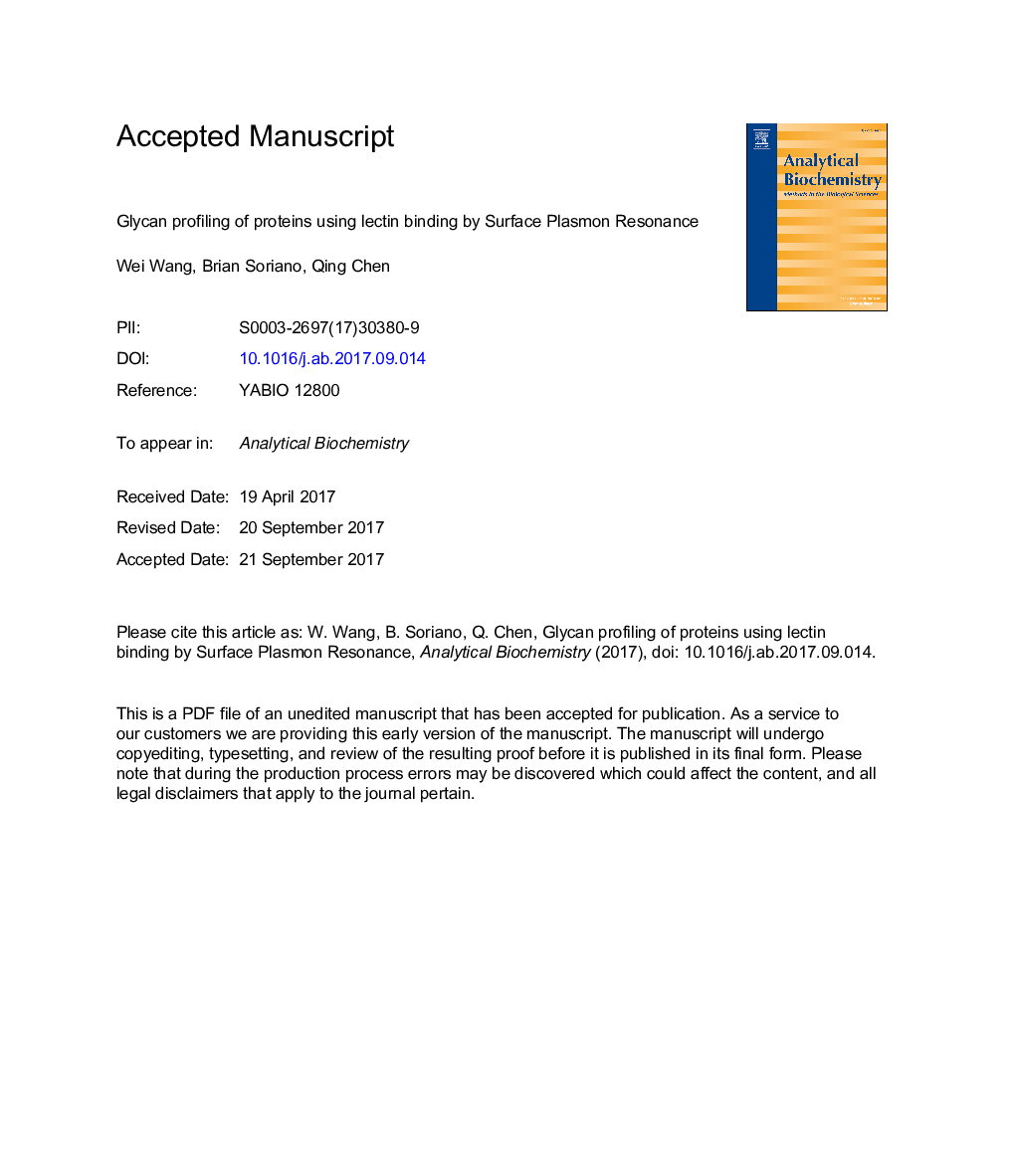| Article ID | Journal | Published Year | Pages | File Type |
|---|---|---|---|---|
| 7557230 | Analytical Biochemistry | 2017 | 39 Pages |
Abstract
Glycan profiling of proteins was studied through their lectin binding activity by Surface Plasmon Resonance (SPR). To validate the method, we monitored specific lectin binding with sequential removal of sugar moieties from human transferrin using specific glycosidases. The results clearly indicated that glycans on the protein can be identified by their selective binding activity to various lectins. Using this method, we characterized Fc glycosylation profiles of therapeutic peptibodies and antibodies expressed in mammalian cells (CHO and HEK 293 6E cells), with E. coli expressed proteins as the negative controls. We observed that antibodies expressed in CHO cells did not contain any sialic acid, while antibodies expressed in 293 6E cells contained sialic acid. CHO cell expressed antibodies were also more heavily fucosylated than the ones expressed by 293 6E cells. We further applied this method to measure the fucose composition of glycan engineered mouse antibodies, as well as to determine mannose composition of human antibody variants with depletion or enrichment of high mannose. The glycan profiles generated using this method were comparable to results from 2-AB labeled glycan analysis of normal-phase separated glycans, and Fc gamma receptor binding activity of the glycan engineered antibodies were consistent with their glycan profiles. Hence, we demonstrated that SPR lectin binding analysis can be a quick alternative method to profile protein glycosylation.
Keywords
Related Topics
Physical Sciences and Engineering
Chemistry
Analytical Chemistry
Authors
Wei Wang, Brian Soriano, Qing Chen,
